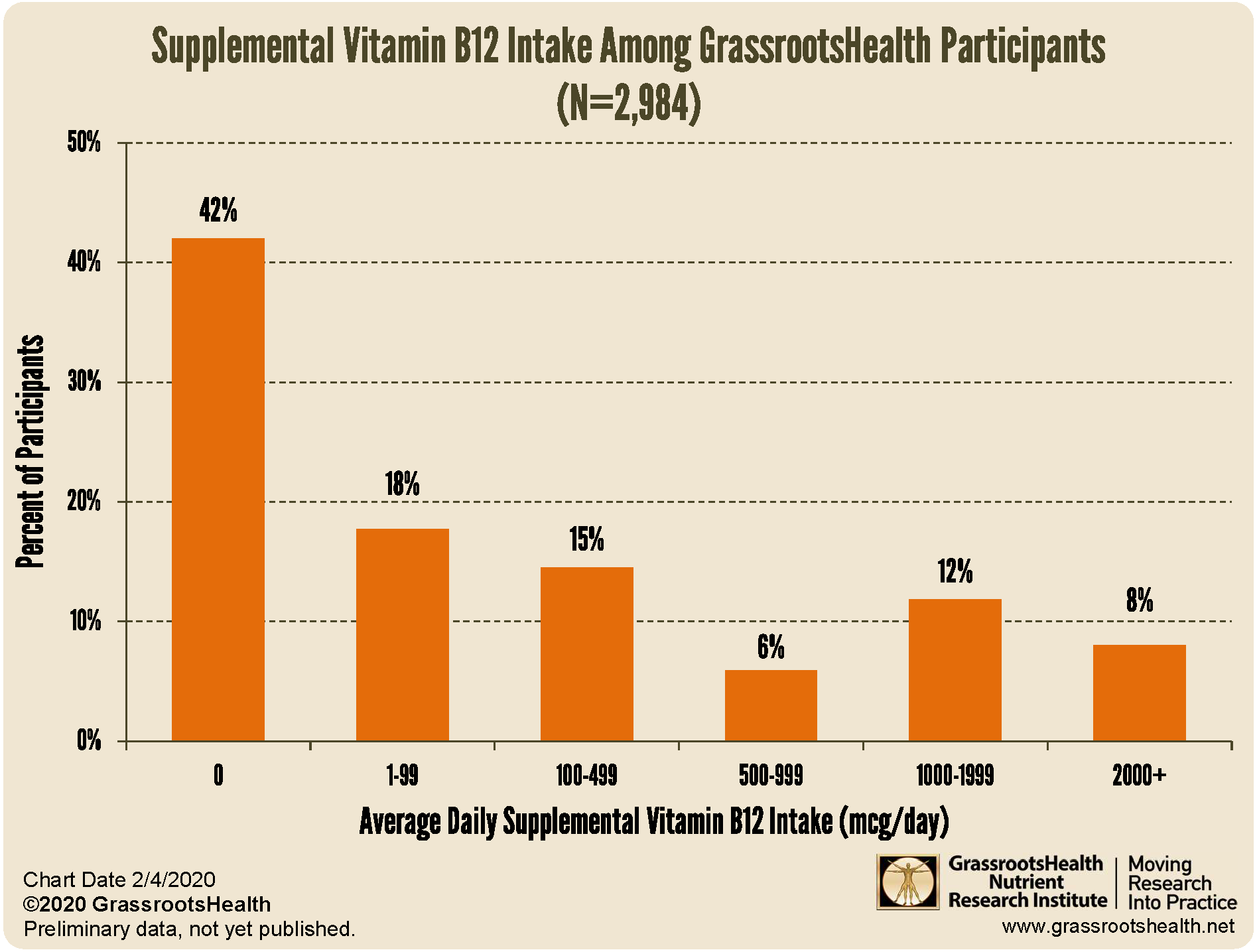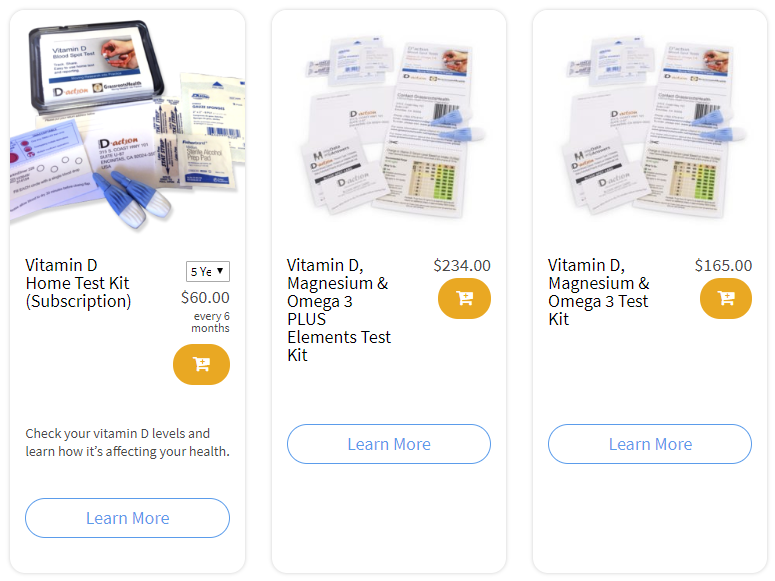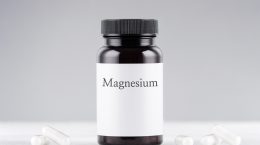Published on February 7, 2020
GrassrootsHealth collects information about supplemental intake amounts for a number of nutrients on its health and lifestyle questionnaire. In previous blogs we showed how much supplemental vitamin C, calcium, vitamin K2, and vitamin B6 GrassrootsHealth participants report taking. In today’s blog we will summarize reported intake amounts of supplemental vitamin B12.
What is Vitamin B12?
 Vitamin B12, also known as cobalamin, is a vitamin most well known for its roles in helping to make red blood cells, maintaining proper nerve function, and maintaining normal levels of homocystein in the blood. Vitamin B12 is found in seafood, poultry, and red meat; deficiency is common among older adults and vegans, as well as among those with gastro-intestinal disorders or who regularly take antacids. Symptoms of deficiency may include tingling and numbness in the extremities, nerve damage, anemia, and memory loss. The recommended dietary allowance (RDA) for vitamin B12 ranges from 0.4 mcg/day for infants to 2.4 mcg/day for teenagers and adults.
Vitamin B12, also known as cobalamin, is a vitamin most well known for its roles in helping to make red blood cells, maintaining proper nerve function, and maintaining normal levels of homocystein in the blood. Vitamin B12 is found in seafood, poultry, and red meat; deficiency is common among older adults and vegans, as well as among those with gastro-intestinal disorders or who regularly take antacids. Symptoms of deficiency may include tingling and numbness in the extremities, nerve damage, anemia, and memory loss. The recommended dietary allowance (RDA) for vitamin B12 ranges from 0.4 mcg/day for infants to 2.4 mcg/day for teenagers and adults.
Vitamin B12 Intake Among GrassrootsHealth Participants
Among participants who reported a value for supplemental vitamin B12, 58% reported taking some and 42% reported not taking any. The chart below shows the distribution of average daily supplemental vitamin B12 intake amounts for almost 3,000 participants.
Among those taking a vitamin B12 supplement, the median intake amount was 250 mcg/day. About one-third (31%) report taking less than 100 mcg/day, about one-third (35%) report taking between 100 and 999 mcg/day, and about one-third (34%) report taking 1,000 mcg/day or more.
Next, we will explore whether supplemental vitamin B12 intake affects vitamin D levels.
Will Your D Level Help Prevent Flu?
Your immune system needs vitamin D to be strong and healthy. Make sure you know your vitamin D level, and take steps to keep it within a target of 40-60 ng/ml or 100-150 nmol/L! Through GrassrootsHealth Nutrient Research Institute, you can also test your essential elements magnesium, copper, zinc and selenium, toxins such as lead, mercury and cadmium, as well as your omega-3 levels, inflammation levels and thyroid stimulating hormone (TSH) level. Find out your levels today! Log on to the test selection page (click the link below) to get your tests and see for yourself if your levels can be improved.
Make sure you track your results before and after, about every 6 months!
Click Here to Access the Test Page
How can I track my nutrient intake and levels over time?
To help you track your supplement use and nutrient levels, GrassrootsHealth has created the Personal Health Nutrient Decision System called

For each specific supplement, you can track what days you take it, how much, and many other details. This will help you know your true supplemental intake and what patterns of use work for you to reach and maintain optimum nutrient levels. Check it out today!








